Once you establish their basic cultivation criteria (intense light, pure water, nutrient-poor soil), the best thing you can do for your sundews is to feed them regularly. Sundews
love food, and most show noticeable growth spurts following a feeding. Food also encourages flowering, a strong seed set, and offsetting. Plus, if you're taking all the trouble to grow carnivorous plants you might as well feed them – that's the point!
I feed my plants beta fish food, since it's mostly made of krill, and krill are the bugs of the sea. Other people use freeze-dried bloodworms, or go as far as to start a wingless fruit fly culture (I have yet to take such extreme measures). I've even heard of someone who keeps a plate of rotting, fly-infested strawberries in his greenhouse, and moves it to different spots to feed different plants more heavily (apparently it just has a sort of ferment-y smell, but I'm not sure that would mollify my girlfriend). I've
described my feeding technique before, and there's also some
good information on Grow Sundews (there's always good information on Grow Sundews).
I
recently fed my whole sundew collection, and have noticed a nice crop of new growth coming up. It was a fairly heavy feeding, and I'm pleased with the results.
 |
| Drosera intermedia 'Cuba' with fresh green growth. |
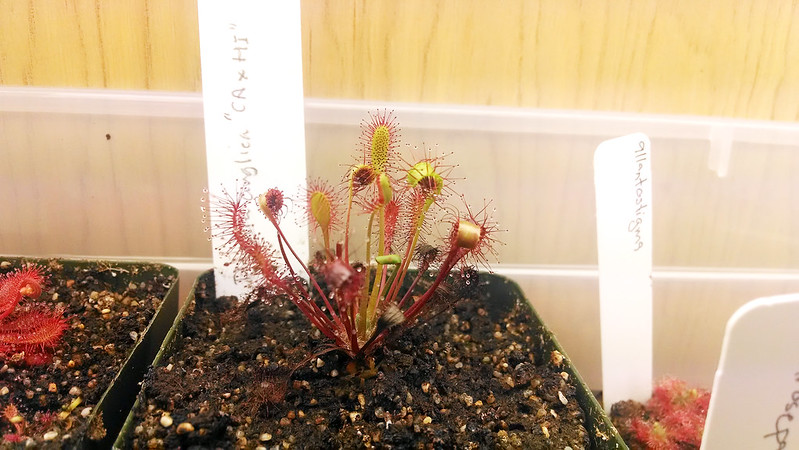 |
| I love this Drosera anglica CA x HI, and I think it's offsetting already. |
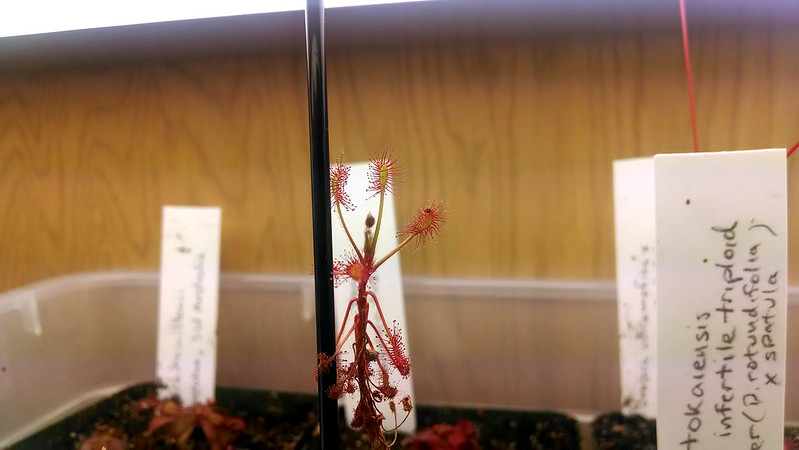 |
| Drosera madagascarensis is a real treat. |
Notice the new growth in these pictures, which is nice and green, while the older leaves have a deeper red coloration.
D. intermedia,
D. anglica, and
D. madagascarensis can all get quite red under bright light (the pigment anthocyanin provides protection from intense sun), but it takes time for the color to build up, and after feeding they grow quickly and the new leaves are green. Some species never turn red, while others are bright red irrespective of feeding, but generally it's food vs. light.
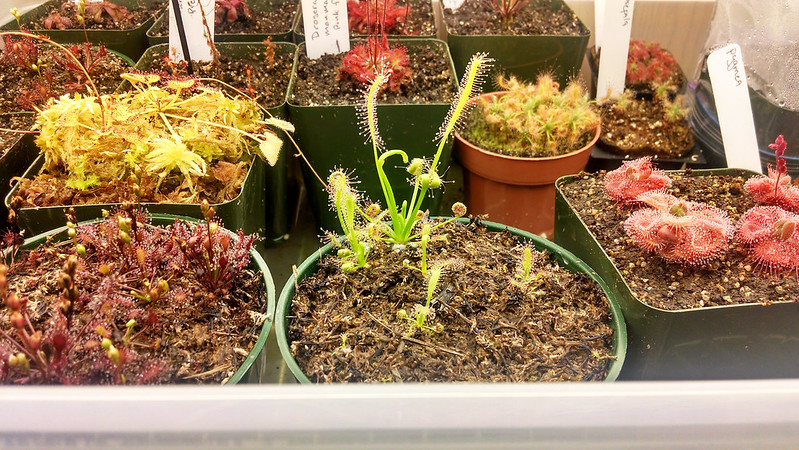 |
| Drosera capensis 'Albino' never turns red, but the tentacles can get a slight pinkish tinge. |
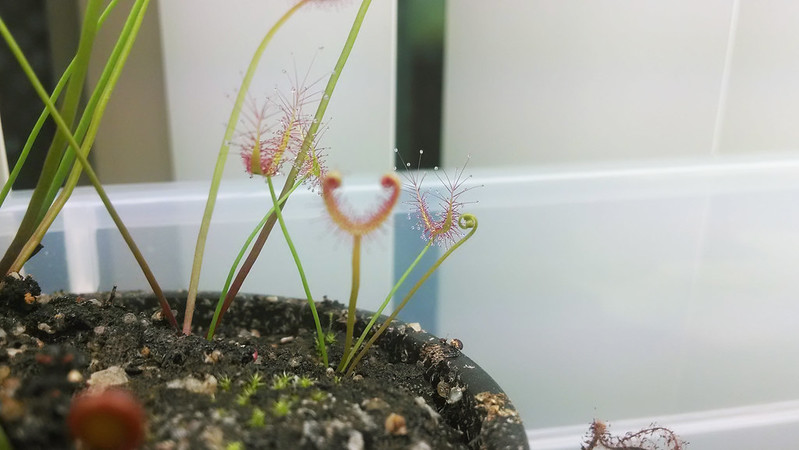 |
| Try to tell me this Drosera binata plantlet isn't just the cutest thing. |
Leaf size and dewiness are the two things that determine how much you can feed your sundews. I err on the side of over-feeding, because honestly the only problems I've ever had are cosmetic (a bit of mold on the leaf or the media), and the bigger growth is really worth it. Plus mold is pretty easy to get rid of with a Q-tip and some isopropyl alcohol. The one other factor to consider when deciding how much to feed your sundew is whether or not it is
Drosera burmannii. If it is, then you can feed it a lot. A
lot. And it will love you for it.
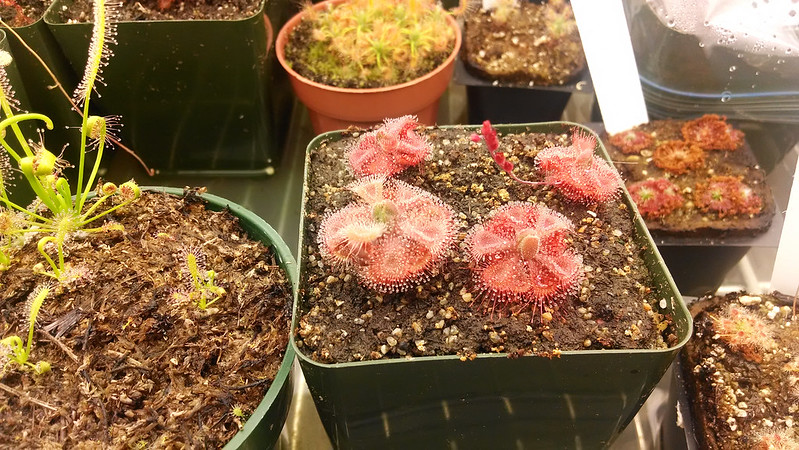 |
| This D. burmannii form is peachy pink when mature and well-fed. Cute! |
Of course, these are the Humpty Doo, NT, Australia form of
D. burmannii, which can get remarkably red under the right circumstances. To that end I haven't fed my other pot for about a month. I'm readying them for the BACPS Annual Show and Sale on the 21st. They're getting beautifully red, and the largest plant is just sending up a flower stalk.
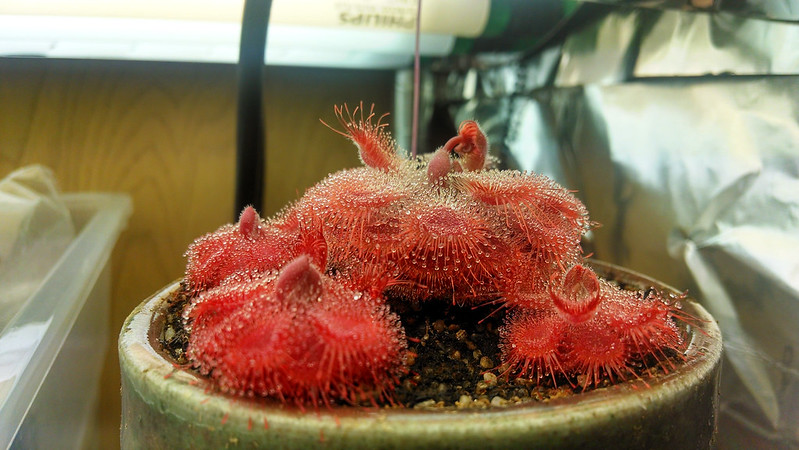 |
| My D. burmannii competition pot. I'm excited! |
Nice timing little guy!







No comments:
Post a Comment